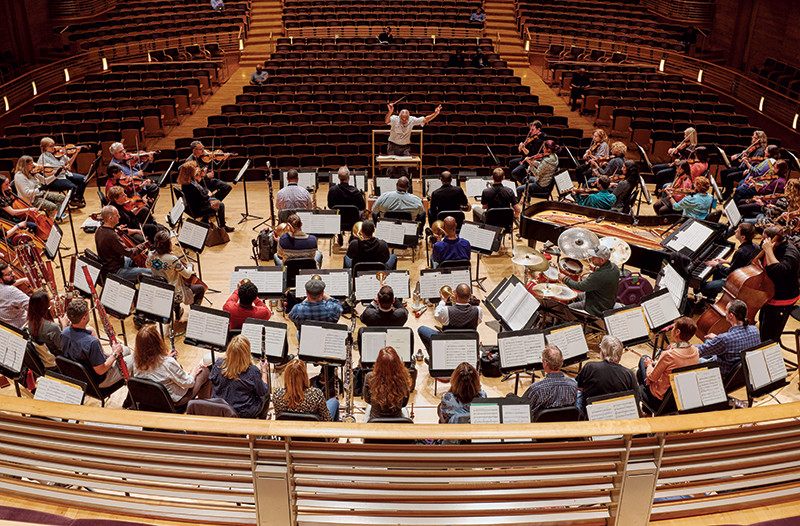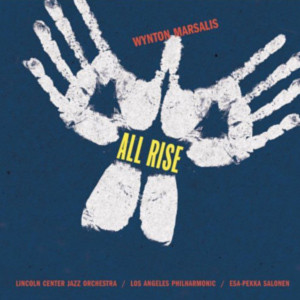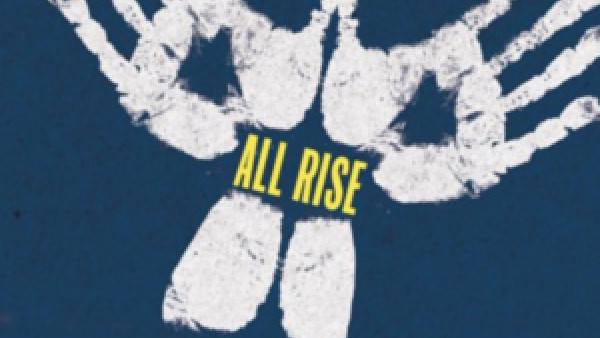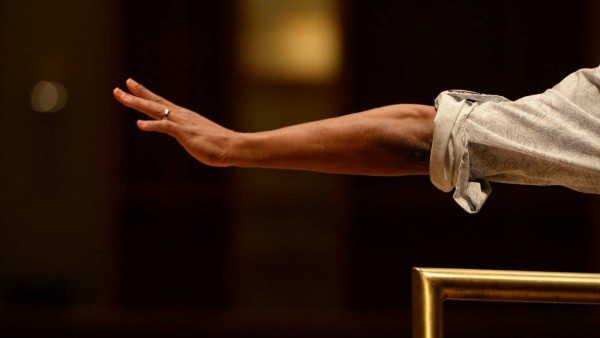All Rise: Strathmore’s Most Ambitious Production of the Season

Dress rehearsal at Strathmore (photo By Edgar Artiga)
The rehearsal for Strathmore’s biggest production of the 2016-2017 season is going smoothly—for the most part. During a break between movements, conductor William Eddins chastises the choir for seeming distracted. “Tomorrow,” he says, “I want all eyes on me.”
During the show, most eyes will be on Wynton Marsalis, the famed trumpeter and composer who wrote the jazz symphony All Rise, the most complicated and expensive of 47 productions Strathmore will put on this season. The show includes the 15-piece Jazz at Lincoln Center Orchestra, 62 musicians from the National Philharmonic, 10 soloists from New York’s Chorale Le Chateau and a 135-person choir with singers from Baltimore’s Morgan State University and the Choral Arts Society of Washington. Then there are the dozens of people who are responsible for planning—from the size of the orchestra and choir to how they’ll all fit onstage—and logistics, like keeping track of sheet music and shuttling performers around North Bethesda.
The two shows, both sold out on a Friday night and Sunday afternoon in February, have been 15 months in the making. On the Tuesday before, Marsalis and the Jazz at Lincoln Center Orchestra arrived from New York; the musicians stayed at the Cambria Hotel & Suites in Rockville. That morning, a truck delivered their instruments, microphones and black suits. Several days earlier, 100 pounds of sheet music made its way via FedEx from New York to Strathmore. In the concert hall, lead stage technician William Kassman, who has worked at the music center since it opened in 2005, has added platforms where the musicians will play. He has pushed a black Steinway Model D grand piano onto an industrial equipment elevator that took it to the stage level. He has arranged chairs and music stands, and moved risers into place.
The day before opening night, Marsalis and the Jazz at Lincoln Center Orchestra are in the center of the stage surrounded by National Philharmonic musicians, rehearsing different parts of the 12-movement symphony. In the middle of a song, Marsalis signals Eddins and the musicians to stop. The violins don’t sound right. They should be “scratchier.” A violinist runs her bow over her strings, producing a discordant buzz. “That’s exactly it,” Marsalis says. She smiles and explains how she created the sound. The music starts again. The National Philharmonic players are in awe of Marsalis and the jazz musicians. “I have never seen so many happy orchestra players, and orchestra musicians are notoriously unhappy,” says National Philharmonic principal violist Julius Wirth.
Eddins keeps an eye on an analog clock on the right edge of the stage. Strict union rules prohibit the musicians from practicing more than 150 minutes a day, including a 20-minute break.
In the wings, production manager Shari Moxley checks a digital clock. With so many groups involved in this production, Strathmore hired her as a freelancer to coordinate all of them. Petite but authoritative, she’s organized and efficient, with clipboard in hand. She’s tracking times and schedules, talking with Eddins and choral director Damien Sneed, and communicating with the music center’s technical crew.
More than 100 members of the Morgan State University Choir are set to arrive on two buses. They can warm up in the concert hall seats, Moxley says. Warm-ups also are happening in the Comcast Circles Lounge, off the lobby, where Sneed plays a rippling version of “Amazing Grace” on the piano while the voices of 10 soloists from Chorale Le Chateau soar. Sneed worked with the chorale in New York for four weeks, in addition to making weekly trips to help the other choirs “interpret the spirit of the work,” he says. He coached them to express a tone and feeling that would reflect All Rise’s blend of gospel, jazz, blues, swing and classical music.
At 7 p.m., it’s time for the run-through, the first time the musicians and singers perform the full piece together. Choir members join the musicians seated onstage and take their places on the risers. At the back of the concert hall, lead audio technician Caldwell Gray sits in the dark behind a massive sound board equipped with hundreds of dials and switches. “We can sweeten the sound a bit,” he says, listening and adjusting the levels. For Gray, All Rise is one of the simpler productions he’s worked on. Unlike rock concerts or theatrical performances, which can require microphones, amplifiers or other tools to project sound, All Rise uses just a few small microphones and the acoustics of the concert hall. “It’s a little unusual to have a jazz orchestra and a symphony orchestra together on stage, but this is a standard large-orchestra-with-chorus arrangement,” he says. “This is what the room is made for. It was built to be all about Wagner and Mahler and Beethoven. It’s a hugely reverberant space.”
It’s opening night, a few hours before the concert begins, and programming manager Sarah Farmer is on the move. She’s responsible for logistics, including booking the housing and travel arrangements for the artists, issuing contracts and payments, and scheduling rehearsals. She’s winding through hallways and stairways on her way to check on the volunteers. In a storage room, Judy Doctor and Jean Williams set up a cellphone check for the Morgan State choir members. Farmer wants the college students, who are used to having their digital devices with them at all times, to understand: No phones are allowed onstage. Then Farmer is off, up some stairs and down in an elevator to stock tables outside the dressing rooms with bags of chips and bottles of water. “We’re always moving for shows,” she says, and this production is one of the busiest. “Some days I’ll check my Fitbit and see I’ve walked like 4 miles.”
In the upstairs lobby, an army of ushers wearing blue, button-down Strathmore shirts chat as they wait for Allen McCallum, the director of front-of-house operations, to call their names and provide assignments. Fifty-five of them—all volunteers—will man doorways and aisles, take tickets and show patrons to their seats.
Eight minutes until showtime. There’s a flurry of activity as violin and viola players line up cases on a ledge backstage and jazz musicians stroll from a couch near the dressing rooms out to the stage. Among them, Marsalis walks from his dressing room through the wing, carrying his trumpet, entering from stage left. He’s smiling and relaxed, dressed in a crisp black suit. He takes his seat in the middle of the stage.
Two and a half hours later, back in the wing, Marsalis congratulates the singers and musicians with handshakes. There’s a sense of elation. “He’s so gracious,” says National Philharmonic double bass player Barbara Fitzgerald. “It’s amazing to be in the midst of these fantastic world-class musicians.”
After the lights come on and the audience filters out, the stage is cleared for the next day’s performance by the Baltimore Symphony Orchestra. Kassman rides with the risers as the platform that’s holding them is lowered like an elevator below the stage. He rolls the piano off the stage and into a wing, stacks chairs and removes music stands. It takes about 30 minutes. The Jazz at Lincoln Center Orchestra will play a concert in Pennsylvania Saturday night before they and all of the key players—musicians and otherwise—return to Strathmore Sunday for the final performance of All Rise.
“To be part of that kind of work is really inspiring,” McCallum says. “When you go into the hall and you see that kind of performance on that scale, you realize that you’ve been a small part of it. Art exists on the stage, but there’s a lot of pieces that come together to make it happen.”
by Stephanie Siegel Burke
Source: Bethesda Magazine



